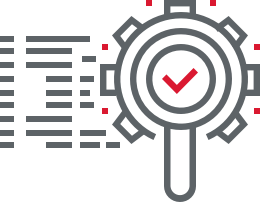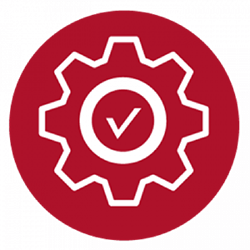Workforce Management
Workforce Management

A Guide to Call Centre Workforce Management
Having the right people in place, focused on key business goals and working productively is the foundation for success in any business unit. But when it comes to allocating and managing resources, the call centre presents two unique challenges:
1
Externally determined workload demands
In a typical business unit, you have significant control over the goals and objectives you’re working toward and the workload you’re placing on your staff as you pursue those goals. But in the contact centre, those goals and objectives are determined externally: Your customers call with needs—and you must be prepared to meet them.
2
24/7 Workload Demands
Another privilege of internally determined goals and workloads is the ability to set expectations or limitations on when or how long staff will be working on achieving those goals. But once again, in the call centre, those expectations are dictated by your customers—and they may contact you via various channels at any hour of any day. That means you must have the right people ready to meet customer needs on a wide range of subjects and complexity levels—24/7.
Due to these unique challenges, most modern multi-channel contact centres rely on sophisticated workforce management (WFM) tools to help them optimise agent schedules and ensure consistent service levels.
This guide will give you an end-to-end look at the components of a WFM solution, the growing WFM challenges that call centres face, and emerging WFM best practises that leading contact centres are using to drive smarter WFM and consistently outstanding customer experiences.
What is Workforce Management?
At its most basic, workforce management is the process contact centres use to ensure that they have the right people and skill sets available to successfully handle customer interactions in a timely manner and at a minimal cost to the organisation.
Contact centres frequently use a metric called “service-level” as the basis for their workforce management. This is a goal set by the organisation establishing how quickly they want to respond to customer needs and resolve them. Call centres base their service levels on desired cost efficiencies and expectations for the customer experience.
The basic building blocks of contact centre WFM
include forecasting, scheduling and managing.

Forecasting
An analyst forecasts the anticipated workload using historical data, knowledge of business trends and even upcoming marketing campaigns.

Managing
During the day, analysts monitor service levels to determine if customer transactions are meeting or exceeding agent availability. Then they can make real-time adjustments to agent schedules to meet higher-than-expected demand or take advantage of opportunities to lower costs.

Scheduling
Schedules are then created that place the right contact centre agents to meet service-level goals throughout the day.
In short, workforce management is all about figuring out how to meet customer demand, without over- or under-burdening agents.
Why is Workforce Management Important in the Contact Centre?
According to research from Dimension Data, 41.3% of contact centres still operate without WFM technology. That’s because, until recently, manual schedule management using spreadsheets was still considered acceptable for creating static schedules.
Yet, as contact centres continue to grow in size and complexity, this approach is quickly becoming outdated. Agents are now expected to be able to handle more than one type of transaction and those transactions can occur across multiple channels. Spreadsheet schedules just can’t scale to meet these evolving needs. That’s where streamlined WFM can help drive new efficiency into the call centre—with indirect benefits that extend across the entire enterprise.
Key values that can be served by next-gen WFM include

Consistent Customer Experiences
When customers contact an organisation, they want the same level of service regardless of who answers the call. Their expectation for each interaction is that the information they receive is accurate and helpful. They also expect to be helped quickly, without long hold or wait times. Call centres can directly influence these expectations with accurate staffing levels.
Agents Job Satisfaction/Engagement
Employees are happy when they feel supported and capable on the job. As self-service customer support features become the standard, Agents are increasingly relied upon to handle more complex contacts. This requires additional training to execute successfully. Yet under-staffed call centres often choose to cancel these sessions in order to keep up with demand. Agents pushed to the brink get frustrated and frustrated agents are more likely to quit. The true cost to hire and train an agent can be upwards of 1.5 times their annual wage and take up to 12 months to fully onboard.
When agent attrition is high, it can be a clear sign that agents aren’t happy. Scheduling employees to maximise work/life balance and prioritise feedback and support in the call centre can improve agent happiness—which means lower recruiting costs and increased agent engagement.


Operational Efficiency
One of senior management’s top goals is to deliver top-notch customer experiences, while efficiently allocating company resources. Both are directly impacted by the frontline staff. Adequate training and agent scheduling can help agents meet the demands of contacts.
Budget Savings
Resource-related costs account for approximately three quarters of a contact centre’s full operating budget. How you plan, schedule and manage those resources can make or break your budget. WFM prevents labour resources from being wasted due to overstaffing, while also maintaining adequate levels to deliver quality interactions.


How WFM Drives Agent Engagement
The surge in intelligent automation, new analytics engines, artificial intelligence (AI), and machine learning (ML) WFM tools promises to deliver dramatic new efficiencies to the contact centre. But organisations can only achieve these lofty goals—spanning customer engagement, budget and operational efficiency—when they have a deep understanding of their existing operation.
It is important to remember these tools were designed to complement and enhance—not replace—human agents. Your agents will remain the engine of your call centre operation. Therefore, assessing current agent engagement is a crucial first step to more efficient WFM.
It All Starts with Agent Engagement
Agent engagement is the level of personal investment a person has in his or her work. On average 30% of employees can be classified as engaged. A growing body of research shows that increasing agent engagement and ultimately job satisfaction directly improves the customer experience—and reduces turnover for both agents and customers.
Key Question: What’s the Secret Ingredient to Agent Engagement?
There is no secret ingredient to agent engagement. Engagement stems from a culture of respect, assumption of good intent, and working together to do the right thing. WFM analysts cannot control the culture, but their actions impact how an agent perceives leadership in a contact centre.

How WFM Drives Agent Engagement
Agents crave feedback
WFM can give agents robust, immediate performance feedback keeps them invested in their role and motivated to improve.
Understand what an agent wants to see from leadership
Often, flexibility—not money—is the biggest factor in agent satisfaction. Giving agents control over their schedules and their responsibilities through more efficient WFM goes further than a raise or a bonus.
Training to help them improve.
Modern WFM software offers functionality to support this, in addition to helping create time to receive feedback.
WFM can help you measure what matters
Metrics like average handle time do very little to provide insight to the customer experience. Instead, moving from a hard value to a holistic assessment gives the agents the ability to control the conversation without watching a clock.
When agents are engaged, it can create trickle-down benefits that affect the entire call centre operation. Call centres that prioritise agent happiness tend to have faster call resolutions and higher customer satisfaction—which helps grow brand loyalty and can become a key differentiator from competitors.
Calculate your savings with intelligent workforce management automation
Discover your company’s money & time savings with Calabrio’s instant calculator
Benefits of Workforce Management Software
Dedicated workforce management software offers a significant upgrade over outdated, inefficient spreadsheet processes. As contact centres respond to rising pressures and new demands, they are looking for new ways to get more out of their agents, while also achieving better results. Across the call centre, WFM can improve schedule optimisation, increase agent engagement, streamline agent workflows and streamline reporting to better align the call centre around both of these objectives.
Here is a closer look at some of the unique benefits WFM software’s AI, ML and intelligent automation features can deliver to your call centre.

Increased Accuracy in Scheduling and Forecasting
Manually re-keying and manipulating spreadsheet data is time-consuming and error-prone. Even when using the utmost care to ensure data integrity, confirming the accuracy of spreadsheet-created schedules is difficult.
Also, using spreadsheets forces analysts and supervisors to guess the optimal timeframes for off-phone activities, such as meetings and trainings. As a result, the average spreadsheet-reliant workforce analyst creates forecasts and runs schedules only 1-4 times per year—leaving the contact centre vulnerable to over- or understaffing the rest of the time.
Workforce management software overcomes
these common accuracy challenges by
Enabling forecasts and schedules to be run more frequently and easily—in much less time—so the contact centre can respond more quickly to seasonality and staffing fluctuations.
Offering the option to reschedule easily, without having to start from scratch as would need to be done with a spreadsheet.
Helping contact centre leaders to better assess forecast accuracy via visual reporting and rectify situations where the centre is over- or understaffed.
Empowering intraday managers to immediately improve the service level by making on-the-fly adjustments, such as optimising breaks and lunches.
Making it possible for supervisors and analysts to identify at a glance the best times to schedule off-phone activities to minimise the potential negative impact on customer service levels.
Providing built-in communication services such as app notifications or SMS alerts to agents if schedules change. Excel planning doesn’t include these integrated systems that create instant alerts.


Less Time Spent Managing the Contact Centre
For contact centres embracing an omni-channel approach to customer engagement, manually forecasting contact volumes and creating schedules for numerous channels is especially time-intensive. When using spreadsheets, fulfiling agent scheduling preferences adds yet another layer of complexity to an already tedious process. As a result, many of those preferences often get ignored. Additionally, managing time-off requests through spreadsheets and emails can be incredibly time-consuming.
Workforce management software streamlines and automates these types of tasks, helping contact centres reduce the amount of time it takes to forecast, schedule and manage service levels for multiple channels and multiple locations. In fact, contact centres that use WFM to automate such tasks save—on average—25% of the time they currently devote to manually performing them. Time savings are even greater for larger, more complex contact centres.
With WFM automation, analysts are able to automate the majority of the day-to-day requests leaving them free to focus attention on ad hoc requests. Automation is set based on your business rules and can approve or deny agent requests for time off, meetings, trainings, mentoring or even schedule swaps with another agent. In addition, with automation, agents are all evaluated by the same set of rules—eliminating any perceptions that analysts are “playing favorites.”
With WFM automation, contact centres can:
- Develop hundreds of forecasts and schedules for different scenarios, in the same amount of time it takes to create a single forecast and schedule in a spreadsheet.
- Perform “what-if” analysis and review alternative options to significantly reduce over- and understaffing issues.
- Reduce the burden of reviewing and approving time-off requests by integrating and automatically syncing data with your company’s HR system.
- Enhance overall employee experiences and reduce attrition with improved employee self-service and faster request processes.
Greater Insight into Contact Centre KPIs
To adequately handle the forecasted workload, agents must actually follow their assigned schedules—otherwise known as “adherence.” Having even one agent out of adherence can greatly impact the service level, especially in smaller contact centres. Modern workforce management tools will allow you to view the agent schedules side by side with the actual phone states, so you can have more insight into what is happening in your call centre.
Modern WFM software solutions help contact centre managers monitor schedule adherence to minimise negative impact on service levels—universally affording them greater visibility to staffing with the ability to scale up or down to meet demand.
When it comes to meeting KPIs, WFM:
- Presents a one-stop shop view of adherence data, rather than requiring managers to manually compare spreadsheets to the automatic call distribution’s (ACD) real-time reporting screens.
- Alerts supervisors to non-adherence via easy visual indicators on dashboards, so they quickly can address issues.
- Empowers agents to self-manage by letting them view and monitor their own adherence status.


Easier Reporting and Analysis
Organisations must be able to accurately and expediently measure and report on call centre performance. Call centre that do not have a WFM system find this job to be time consuming as they need to pull data from many different systems and compile it in a single format for analysis and consumption.
By using WFM software tools, organisations can experience vast improvements in day-to-day contact centre operations driven by accurate reports that can be generated as needed with a click of a mouse. Reports can also be set up to autorun at preferred intervals—whether that be hourly, daily, week or even monthly.
With WFM automation, contact centres can:
- Create dashboards without help from IT, and without needing a degree in statistics or math.
- Gain real-time, visual reporting capabilities that reveal trends in volumes, staffing levels and adherence—and easy access to data that extends to the agent as well.
- Empower agents with self-service capabilities to alter work schedules or take additional time off the phone for training or meetings.
The Next Generation of Workforce Management
Evolving WFM challenges demand new solutions
For contact centre leaders, the pressures to maintain service levels and drive efficiency—while dealing with high turnover—remain constant. But as organisations in every category grow hyper-focused on the customer experience, the contact centre increasingly finds itself in the spotlight, amplifying these pressures.
To rise to the challenge, contact centre leaders are looking for smart workforce management (WFM) tools that enable them to get more: More out of their agents and more tools to add more strategic value to the business.
But in a crowded WFM market filled with seemingly similar products, what does next-generation WFM really look like?

Identifying the Right WFM Solution
Every WFM solution on the market today offers basic scheduling functionality to keep your contact centre running at the status quo. But WFM partners who have leading-edge capabilities and functionalities can deliver added value to your call centre operation—driving new efficiencies into forecasting and scheduling.
This section will help you navigate this difficult decision by focusing on components that define next-gen WFM solutions:
Core Capabilities of Next-Gen WFM
Easy, Fast Deployment
One of the first questions to ask a WFM solution provider is, “How long will it take to get up and running?” Deploying a WFM solution should be a matter of weeks—not months. It’s also important to ask about implementation services, because you shouldn’t end up with huge bills for additional consulting just to instal the product. Look for expert guidance and implementation services that are fully included in the contract.


Self-Service Customizability
No two contact centres look exactly alike, so there’s no such thing as a one-size-fits-all WFM solution. That means customization is typically unavoidable. Almost every WFM solution on the market can be customised, but the complex nature of the software makes it difficult to personalise to each contact centre’s business requirements. Ideal solutions will include self-service customizability as part of the design framework. This makes it easy for any user—regardless of technical background—to make important customizations without costly expert assistance.
True Flexibility
Cloud-based solutions are no longer novel—they’re the standard. As such, your WFM solution should give you full flexibility in choosing a deployment model: cloud, on-premises or a hybrid deployment. And that flexibility shouldn’t require tradeoffs. If you choose a cloud deployment, you should expect full functionality. If you choose to deploy on-premises, you should expect the same level of scalability that the cloud can offer.


Rapid Learning Curve
Across all contact centres, a WFM analyst remains a high-turnover role, with high training costs amplifying the hurt of turnover. Leading WFM solutions are easing that pain by making training significantly faster. This allows a new WFM analyst to complete basic training in hours—not days—and begin contributing after just a half-day of training.
True Scalability
Most solutions touting scalability focus on scaling up. But best-in-class WFM solutions let you scale up and down in near real time. True scalability ensures you’re ready for rapid growth—and able to handle seasonal swings. Look for this two-way scalability and simplified licencing that ensures you only pay for what you need.


Easy Updates & Upgrades
Cloud-based WFM solutions make updates and upgrades seamless and automatic. New features and security patches are added as soon as they’re available, keeping your system state-of-the-art at all times. And because a tool is only valuable if you know how to use it, consider WFM solution providers who also provide guidance and training on new features. These value-added services should be built into the contract—not added cost.
Emerging WFM Best Practises
The WFM world continues to see rapid progress in what technology allows contact centres to do—from transforming daily workflows to enhancing long term strategy. So, what are innovative and forward-thinking contact centres actually doing with their WFM tools? Here are five ways to leverage best-in class WFM capabilities to unlock new best practises that drive contact centre performance.
Honing Ideal Schedules with Rapid Custom Scheduling
Leading contact centres are using rapid scheduling capabilities to create ideal schedules and accommodate changes. New rapid scheduling capabilities enable you to generate custom schedule requests with multiple custom parameters—in a few seconds, with a few clicks. This gives WFM analysts hours of time back and frees them to tweak parameters to further optimise schedules and drive WFM efficiencies.


Using Predictive Forecasting to Build More Accurate Long-Term Plans
It takes time for WFM analysts to learn the unique patterns in contact volume—the daily and seasonal ebbs and flows. Moreover, these patterns are shifting faster than ever, with emergent issues driving one-off trends that break the mold. WFM solutions now leverage advanced ML and AI tools to predict those shifting patterns and emerging trends. By pulling together data streams from across the contact centre—and even across the entire organisation—these intelligent tools identify new and surprising connections to better anticipate changes. With these tools at their side, WFM analysts are confidently aligning staffing levels with predicted volume—from building more accurate seasonal forecasts to predicting intra-month surges.
Using Intraday Dynamic Scheduling Tools to Adapt to the Unexpected in Real Time
Today’s AI tools are smarter and more reliable than ever. But they can’t predict everything—weather-related issues, product quality problems, service outages, etc. When the unpredictable impacts service levels, new intraday dynamic scheduling tools can adjust agent schedules in real time. These dynamic scheduling tools instantly optimise agent lunches and breaks to better align with shifts in predicted call volume. They also enable WFM analysts to easily open up overtime opportunities to meet surging volume—and to offer voluntary time-off (VTO) during unexpected slow periods, because overstaffing can be almost as costly as understaffing.


Streamlining Approvals with Simple Automation
Approvals tend to take up a disproportionate amount of time for contact centre managers and WFM analysts. Not only is this work tedious, it can create bottlenecks as you build long-term schedules or adjust schedules to accommodate unexpected volume. Best-in-class WFM solutions now make it easier than ever to build user-generated auto-approval workflows. While the traditional auto-approval workflow requires a complex chain of individual criteria, new WFM tools enable you to link multiple criteria in a single, intuitive, end-to-end workflow. This greatly reduces the daily burden of simple approvals, giving WFM analysts a more accurate real-time view of scheduling—and giving contact centre leaders more time to focus on more complex activities.
Enabling Agent-Empowered Scheduling
As the contact centre world works to crack the agent engagement code, one factor has been proven to deliver big impact at a very small cost: giving agents greater flexibility and control. Innovative contact centres are using new WFM tools that give agents the ability to select their own availability and control their own schedules. Best-in-class WFM tools are smart enough to automatically account for agent availability and future time off when creating full schedules. Dynamic scheduling tools add further agent empowerment, allowing agents to grab extra overtime hours to earn extra money—or enjoy some VTO. And leading WFM solutions bring all this to life in a mobile-friendly, self-service platform. Agents can manage their schedules anytime, anywhere and from any device, inspiring a more active, engaged role in their careers.

Finding a Partner vs. a Vendor
Look at any software solution provider’s marketing language and you’re sure to see the word “partner” more than a few times. So, what’s the difference between a vendor and a partner? In the simplest sense, a vendor sells you something that helps you achieve an outcome; a partner works with you to help you achieve that outcome.
The difference isn’t just service—it’s the approach to service. Many vendors offer the same “help” in achieving your goals. They just charge a premium for it—generating big revenue. In contrast, a true partnership approach aligns the success of the vendor with the success of the customer. As a result, a true partner is focused on doing everything they can to ensure your organisation’s success. A partner considers expert guidance, consultation and professional services as part of the solution they’re offering—added value without added fees.

In-House Expertise
Consultative expertise drives the true partnership approach. But vendors face familiar pressures to drive cost-efficiencies—and many pursue a familiar strategy: outsourcing their customer service and professional services. This strategy should leave you with questions about the depth of product knowledge from these third-party “experts.” Moreover, by keeping all expertise and service in house, a true partner maintains a direct connection between your team and the in-house experts—helping to drive efficient communication and effective solutions.

VOC-Driven Product Development
Contact centre leaders know the value of the voice of the customer (VOC). In fact, most successful organisations today are adopting a customer-centric approach that lets the VOC guide business decision-making. You should expect the same from your WFM solutions partner. Look for a partner that actively seeks customer feedback—from all customers, not just the big-name or big-ticket ones—to constantly improve their WFM tools. Look for a demonstrated record of VOC-led product development. This customer-fueled innovation gives you confidence in your WFM investment, knowing that your biggest pain points will rapidly be turned into new features and functionalities.

Clear & Confident Product Roadmap
Making an investment in a WFM solution is a major undertaking—and you should feel confident in the long-term viability of the toolset. The first thing to look for is a simple product portfolio: no confusing matrix of features and functionalities; no redundant offerings (the hallmark of a portfolio built through disjointed mergers and acquisitions). Second, look for a demonstrated commitment to investing in product development. There should be no risk of your WFM solution stalling or getting phased out. Digging into a vendor’s product roadmap can give you the confidence you need to make a future-proof and protected investment.


Capitalising on the Promise of Next-Gen WFM
As contact centres face evolving challenges and increasing demands, rapid innovation in WFM technology promises to rise to the occasion and help achieve an elevated approach to WFM. But with a crowded marketplace, perhaps the greatest challenge is making smart investments in WFM tools and technologies that can truly deliver on this promise. The good news is that the right tools and solutions are out there—and they really can revolutionise the way your contact centre operates. Once you have identified the capabilities your operation needs to achieve next-gen WFM, you can ensure your WFM solution has the core functionality to let you hit the ground running and achieve the outcomes that matter most for your business.








